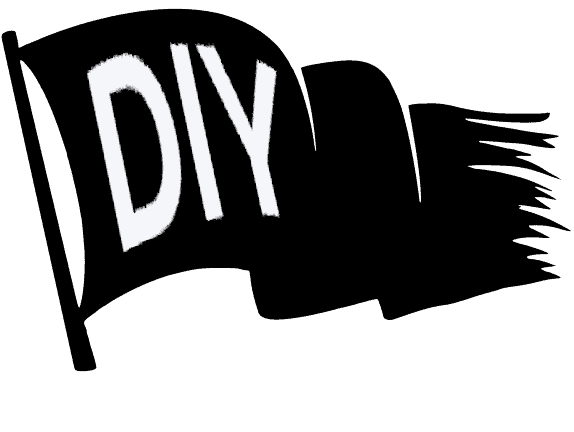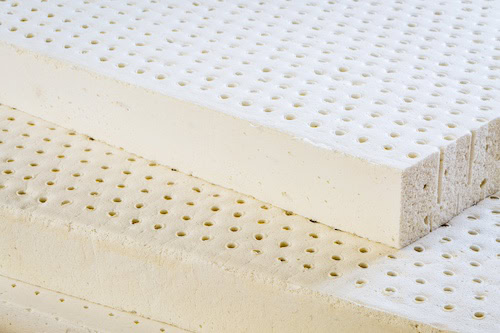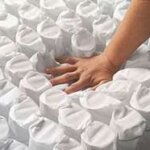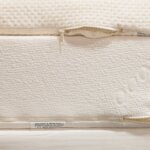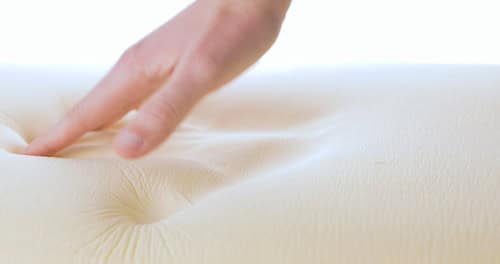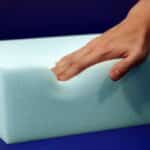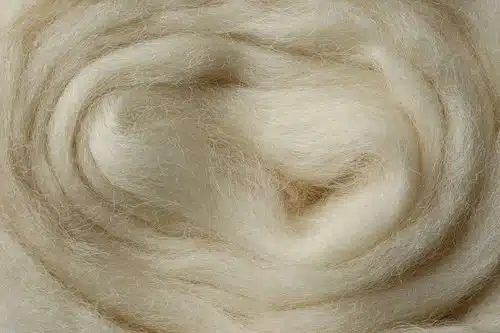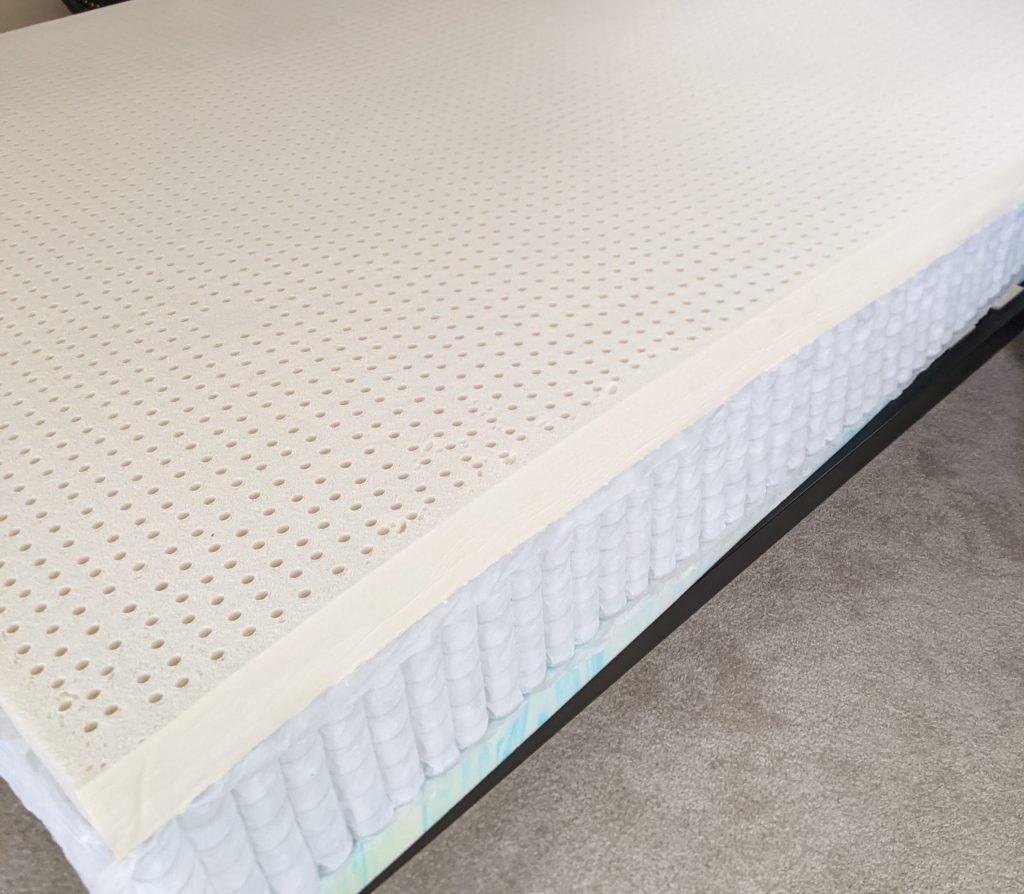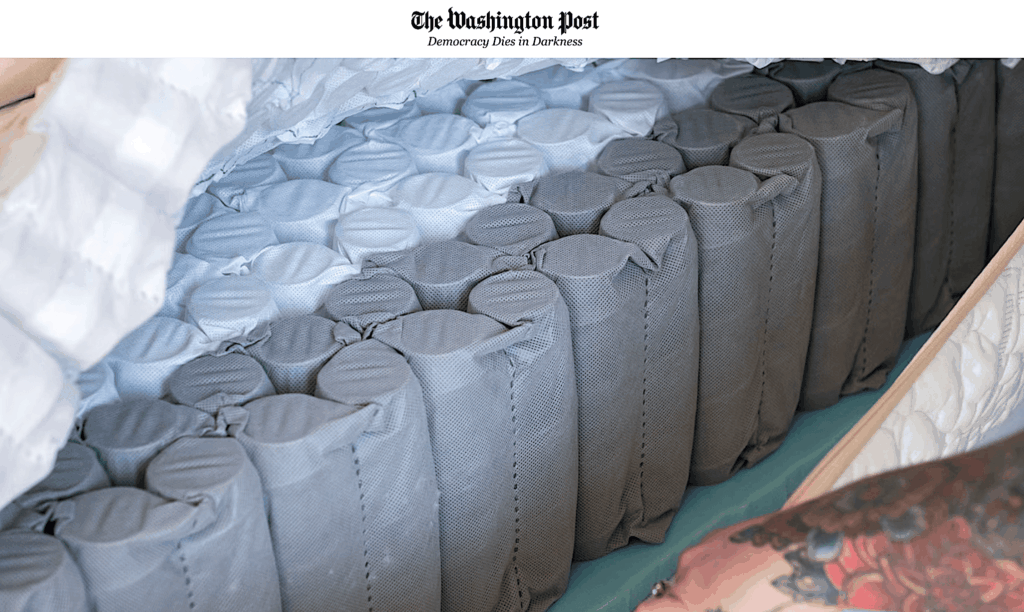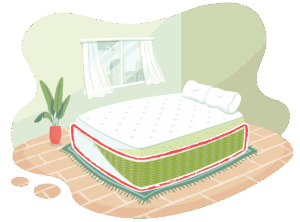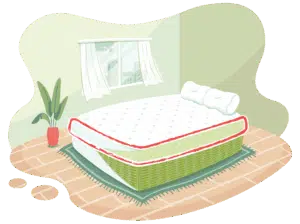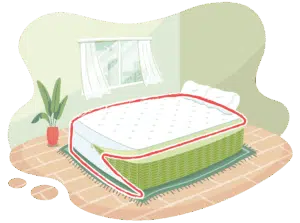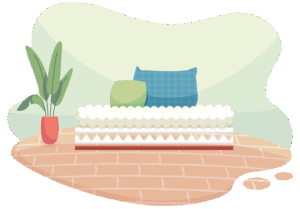MattressesAre NOTComplex
Every mattress is basically comprised of two simple layers:
- A Softer COMFORT Layer
- A Firmer SUPPORT Layer
Stack ’em & wrap ’em in a zippered cover.
That’s it!
An exceptional mattress can, quite literally, be as elegantly simple as that.
A typical COMFORT LAYER is usually between 3” and 6” thick. DIYers often go for memory foam or latex foam as their comfort layer. Some people use both.
A typical SUPPORT LAYER – whether it be made of durable pocket springs, resilient latex, or economical polyfoam – is generally between 4” and 8″ thick, depending on your size and preferences.
If you want to get fancier than those two basic layers, you’re not alone. Many DIYers add temperature-modulating wool batting as the top layer. A one-inch coco coir mat makes a breathable & cooling base layer under pocketed coils. Etc.
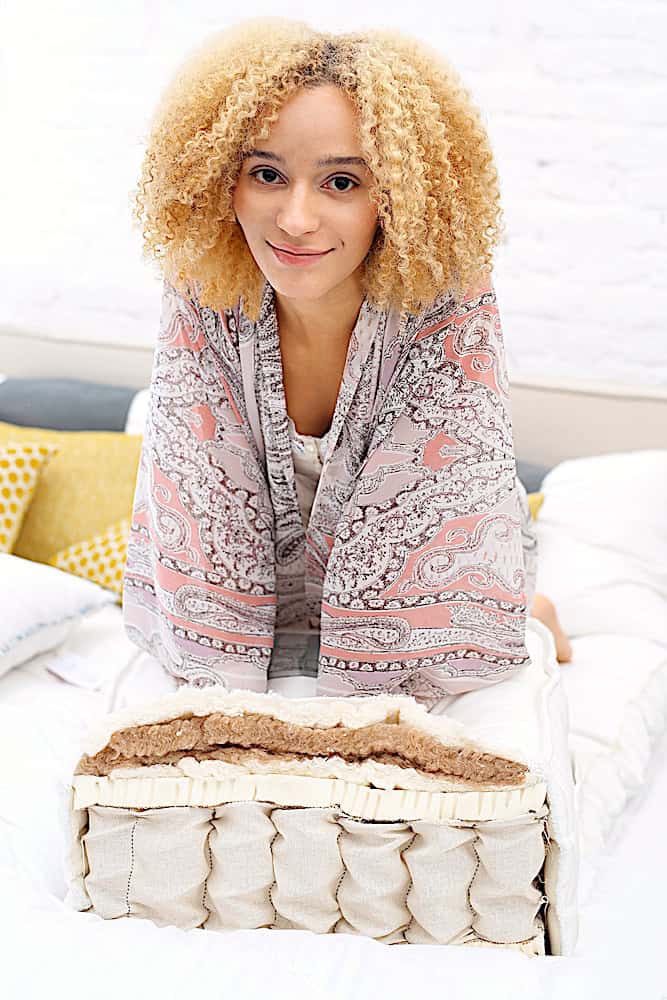
Either way, it’s all still just stacking layers of mattress materials inside a zippered cover.
Like a giant layer cake. That you sleep on. 🎂 🛌 💤
DIY is a Much BETTER Option
Free of Toxins
When you DIY, you decide exactly what goes into your mattress. Don’t want any industrial glues, fiberglass, or chemical flame retardants? Great! You don’t need them.
You Decide
Your mattress, your way. Want to make a wholly organic mattress? A vegan one? A high-end hybrid? You can do that easily. We even share terrific blueprints you can follow.
A Mattress as Unique as You Are
When you DIY, you can customize your zippered mattress to match your height, weight, and sleep style.

Get More For Your Money
DIY Mattresses are an Excellent Value
You pay for the mattress components you choose, and that’s it.
You aren’t paying for a fancy showroom.
You aren’t paying for a marketing department.
You aren’t paying for a sales team, their commission, or anything else.
This way, your money goes toward upgraded mattress parts instead.
